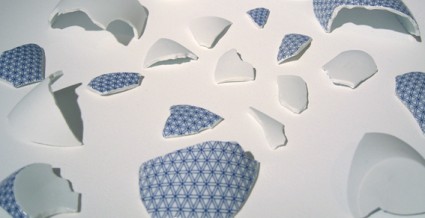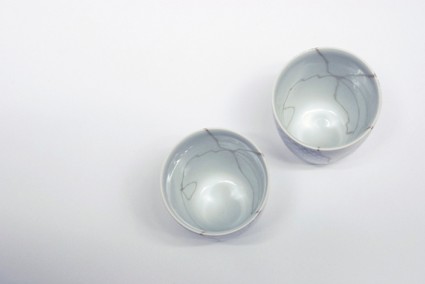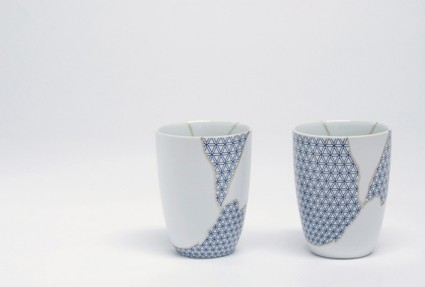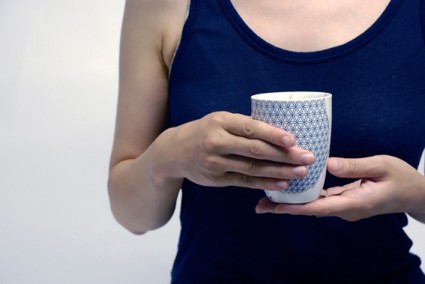There is a certain Japanese aesthetic that values the incorruptibility of destruction. Sen no Rikyu, the great tea master, believed that the gates of creativity – in its purest form – only open by resisting and destroying existing concepts engraved by our predecessors.
As Japanese designer Masayuki Kurokawa pointed out in his “Eight Manifestations of the Japanese Aesthetic,” “ [destruction] is considered to be a device that interrupts (destroys) the current flow and permits a major leap forward. The idea is that life forces are stimulated by defiance and are realized precisely through the process of destruction.”
Fast-forward to 2010. Norihiko Terayama, of Studio Note, in my opinion, is a designer who often embraces this concept, leading him to create beautiful objects based on the fleeting, destructive cycle of nature (see “related” below). His latest work is Twotoo, a pair of tea cups that have been revived using “tsunagi” (or bonding), a method commonly employed to repair broken ceramic dishes. The silver and gold lines that run throughout the piece, serving as evidence of where the ceramic bond broke, writes Terayama, often results in a deep attachment that surpasses the beauty of its previous form.







No comments:
Post a Comment